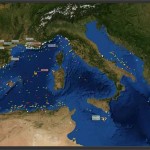Saint-Gobain Performance Plastics announced today that the ONEGlove® protective glove will soon be certified to EN standards for use with Hazmat and CBRN protective ensembles. Under the certification standard EN 374, the ONEGlove® will be approved for use with all EN 943 certified suits and will also carry the CE mark. The ONEGlove® will be showcased at the Eurosatory International Exposition, June 11 – 15, in Paris, France (Hall 6 – Booth K 74).
The revolutionary ONEGlove® offers the widest range of protection against toxic industrial chemicals and warfare agents in an integrated, single-piece construction. Made from high-performance materials including unique PTFE fluoropolymer film as well as Kevlar® and Nomex® fabrics, ONEGlove® also provides superior puncture resistance and physical protection.
“When it comes to dangerous hazmat operations, the hands are one of the most vulnerable parts of the body,” explains Ian Hutcheson, Market Manager, Saint-Gobain Performance Plastics. “ONEGlove® offers the physical protection necessary to safeguard the hands of military personnel in threatening situations, so they can focus on getting the job done.”
At the show, Saint-Gobain is also exhibiting its line of ONESuit® hazmat suits designed to protect military personnel from chemical and biological agents, including the ONESuit® Pro CBRN and its new Level B hazmat suit, ONESuit® Shield. ONESuit® products are specified by government agencies, military divisions and fire departments worldwide for protection in emergencies involving hazardous materials and terrorist threats.
Along with chemical protective garments, Saint-Gobain will also highlight its proprietary Coretech® barrier membrane technology. Coretech®ShelterGuard is an easy-to-use alternative for chemical and biological protective shelters, tents for military expedition, medical treatment units, as well as collective protection installations. A single-skin CBRN shelter allows for easier erection and avoids the risk of the CBRN inner layer being omitted in operation when compared to a multilayer shelter. A light-weight, single-skin shelter also reduces the set-up and tear-down times and logistics, as well as making operational deployment much easier.




